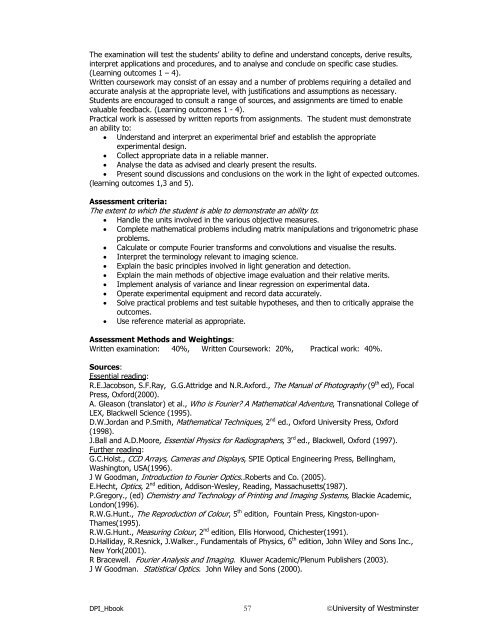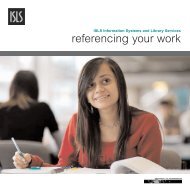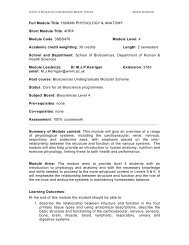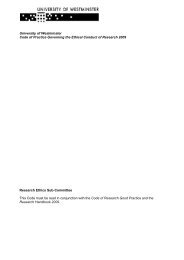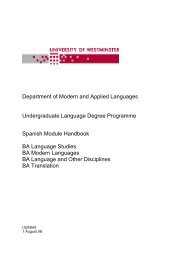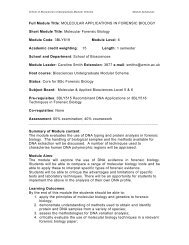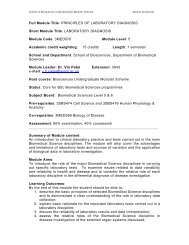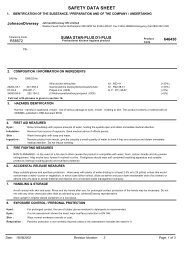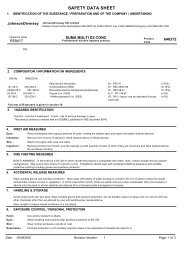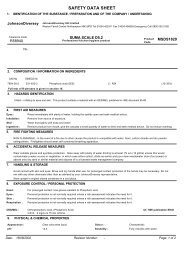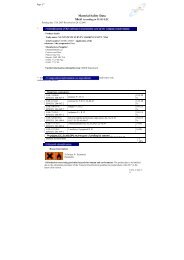CONTENTS 1. Introduction 1.1 Course Outline 1 1.2 Introduction ...
CONTENTS 1. Introduction 1.1 Course Outline 1 1.2 Introduction ...
CONTENTS 1. Introduction 1.1 Course Outline 1 1.2 Introduction ...
You also want an ePaper? Increase the reach of your titles
YUMPU automatically turns print PDFs into web optimized ePapers that Google loves.
The examination will test the students’ ability to define and understand concepts, derive results,<br />
interpret applications and procedures, and to analyse and conclude on specific case studies.<br />
(Learning outcomes 1 – 4).<br />
Written coursework may consist of an essay and a number of problems requiring a detailed and<br />
accurate analysis at the appropriate level, with justifications and assumptions as necessary.<br />
Students are encouraged to consult a range of sources, and assignments are timed to enable<br />
valuable feedback. (Learning outcomes 1 - 4).<br />
Practical work is assessed by written reports from assignments. The student must demonstrate<br />
an ability to:<br />
• Understand and interpret an experimental brief and establish the appropriate<br />
experimental design.<br />
• Collect appropriate data in a reliable manner.<br />
• Analyse the data as advised and clearly present the results.<br />
• Present sound discussions and conclusions on the work in the light of expected outcomes.<br />
(learning outcomes 1,3 and 5).<br />
Assessment criteria:<br />
The extent to which the student is able to demonstrate an ability to:<br />
• Handle the units involved in the various objective measures.<br />
• Complete mathematical problems including matrix manipulations and trigonometric phase<br />
problems.<br />
• Calculate or compute Fourier transforms and convolutions and visualise the results.<br />
• Interpret the terminology relevant to imaging science.<br />
• Explain the basic principles involved in light generation and detection.<br />
• Explain the main methods of objective image evaluation and their relative merits.<br />
• Implement analysis of variance and linear regression on experimental data.<br />
• Operate experimental equipment and record data accurately.<br />
• Solve practical problems and test suitable hypotheses, and then to critically appraise the<br />
outcomes.<br />
• Use reference material as appropriate.<br />
Assessment Methods and Weightings:<br />
Written examination: 40%, Written <strong>Course</strong>work: 20%, Practical work: 40%.<br />
Sources:<br />
Essential reading:<br />
R.E.Jacobson, S.F.Ray, G.G.Attridge and N.R.Axford., The Manual of Photography (9 th ed), Focal<br />
Press, Oxford(2000).<br />
A. Gleason (translator) et al., Who is Fourier A Mathematical Adventure, Transnational College of<br />
LEX, Blackwell Science (1995).<br />
D.W.Jordan and P.Smith, Mathematical Techniques, 2 nd ed., Oxford University Press, Oxford<br />
(1998).<br />
J.Ball and A.D.Moore, Essential Physics for Radiographers, 3 rd ed., Blackwell, Oxford (1997).<br />
Further reading:<br />
G.C.Holst., CCD Arrays, Cameras and Displays, SPIE Optical Engineering Press, Bellingham,<br />
Washington, USA(1996).<br />
J W Goodman, <strong>Introduction</strong> to Fourier Optics..Roberts and Co. (2005).<br />
E.Hecht, Optics, 2 nd edition, Addison-Wesley, Reading, Massachusetts(1987).<br />
P.Gregory., (ed) Chemistry and Technology of Printing and Imaging Systems, Blackie Academic,<br />
London(1996).<br />
R.W.G.Hunt., The Reproduction of Colour, 5 th edition, Fountain Press, Kingston-upon-<br />
Thames(1995).<br />
R.W.G.Hunt., Measuring Colour, 2 nd edition, Ellis Horwood, Chichester(1991).<br />
D.Halliday, R.Resnick, J.Walker., Fundamentals of Physics, 6 th edition, John Wiley and Sons Inc.,<br />
New York(2001).<br />
R Bracewell. Fourier Analysis and Imaging. Kluwer Academic/Plenum Publishers (2003).<br />
J W Goodman. Statistical Optics. John Wiley and Sons (2000).<br />
DPI_Hbook 57 ©University of Westminster


